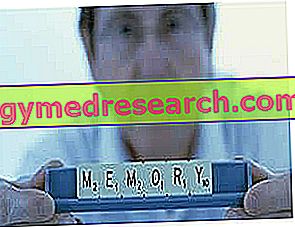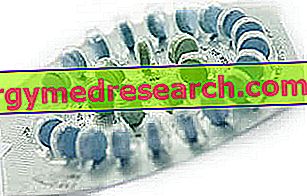Currently, the diagnosis of Alzheimer's disease is based on the analysis of clinical history, neurological examinations and neuropsychological tests.
The criteria for a correct diagnosis are based on different characteristics.

- memory,
- language,
- mathematical calculation,
- orientation
- judgment ability.
In addition to these, according to the NINCDS / ADRDA criteria ( National Institute of Neurological and Communicative Disorders / Alzheimer's Disease Association and associated disorders ), the absence of other symptomatic disorders and a progressive worsening of the loss are necessary for the correct diagnosis of this pathology of memory.
To assess changes in the patient's cognitive abilities, neuropsychological tests are widely used, such as the Mini-Mental State Examination (MMSE).
How the Mini-Mental State Examination is used
This test can be used by doctors both for a diagnosis of dementia and to assess progression and severity. In practice, this test involves a series of questions and tests, each of which consists of a score if the answer is correct. If each answer is correct, you can earn a maximum score of 30 points. The Mini-Mental Test involves different mental abilities, including individual memory, attention and language. In general, a score of 27, 30 or more is considered normal. However, reaching a lower score does not necessarily mean that the individual has dementia. For example, some individuals may have physical problems, such as difficulty hearing. This makes it difficult to perform the test, but if it were performed in such individuals, damage to the cognitive abilities would be evident.
In other cases, this type of test can be submitted to individuals who have already been diagnosed with dementia, to understand the speed of disease progression and how severe the symptoms have become. On average, individuals with Alzheimer's disease who have not undergone adequate treatment lose 2 to 4 points of the Mini-Mental Test each year.
Mini-Mental Test score
The Mini-Mental Test score represents one of the criteria taken into consideration by doctors when deciding what type of drug therapy could help an individual who is diagnosed with dementia. It is important to point out that the term dementia refers not only to Alzheimer's disease, which is the most common cause of dementia, but also to other conditions that lead to this state and in which evaluation is also useful using the Mini- Mental Test. For example, following a heart attack, you can arrive at a condition of vascular dementia, due to the lack of oxygenation of the brain; or we can talk about dementia with Lewis bodies, referring to the small anomalous structures that develop inside nerve cells. The presence of these structures is responsible for the degeneration of the nervous tissue. Symptoms affect memory to a lesser extent, but may include disorientation and hallucinations or difficulty in reasoning.
Another consideration that must be done, when performing a Mini-Mental Test, is the level of education of the subjects. This is because for highly educated individuals, questions may be too easy; vice versa for uneducated individuals, the questions could be very complicated. This means that a highly educated subject with mild dementia can achieve a score that falls on a "normal individual" scale; on the other hand, a poorly educated individual, without cognitive problems, can instead accumulate such a low score (due to the difficulty of the questions) that he falsely proves to be suffering from dementia.
For these and other reasons, a doctor is required to perform this test.
In addition, in association with mental status assessments, single photon emission tomography (SPECT) and positron emission tomography (PET) can be very useful for confirming the diagnosis, if available. It has been observed that SPECT appears to be very superior in differentiating Alzheimer's disease from other possible causes, compared to the analysis of family history and patient observation.
Finally, for a definitive diagnosis of Alzheimer's disease, in addition to clinical evaluation, post-mortem confirmation of the presence of two histopathological features (alterations caused in the tissues of an organism by different pathological processes) is appropriate. These histopathological features are known in Alzheimer's disease as: senile plaques and neurofibrillary clusters.
Experienced clinicians are able to correctly diagnose 80-90% of Alzheimer's patients.



